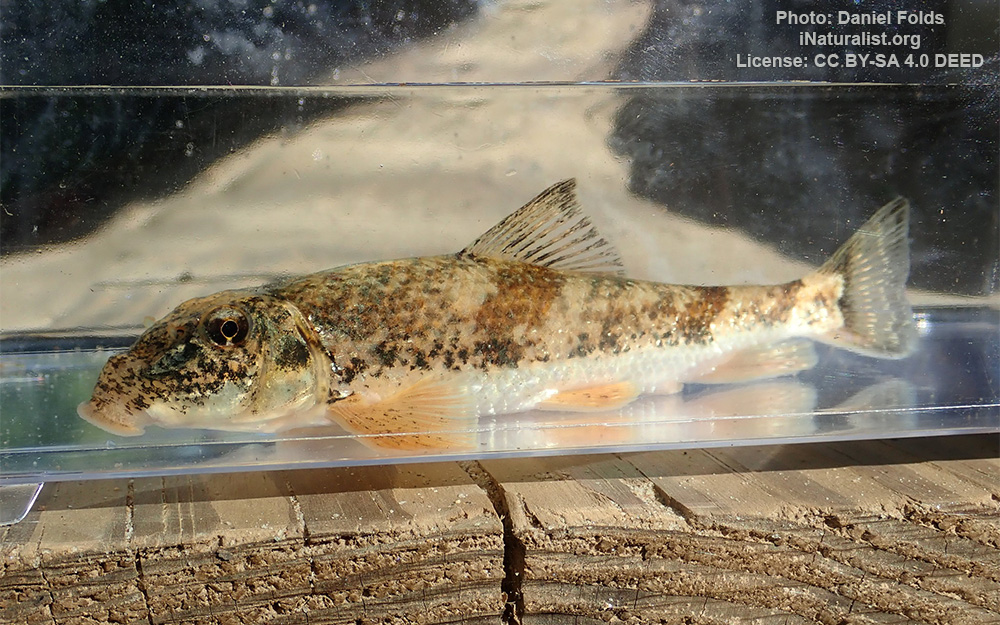Roanoke hog sucker
(Hypentelium roanokense)

Image source: Daniel Folds | inaturalist.org
Classification
General data
The Roanoke hogsucker (Hypentelium roanokense) is a freshwater ray-finned fish found in the upper and middle Roanoke River basin in North Carolina and Virginia. It is very similar to and lives in the same area as the northern hogsucker. They are in the sucker family, Catostomidae. Many anglers enjoy catching them due to their ability to put up a good fight. They are not considered a game fish and are considered significantly rare due to their limited distribution.
The Roanoke hogsucker can get up to 16 cm in total length. It has a body shape similar to the other hogsuckers having a boxy head, protruding lips, and dark saddles. The Roanoke hogsucker is very often mistaken for the northern hogsucker, but can be distinguished by four things. It has light horizontal lines on its back and sides, poorly developed dark saddles between its head and dorsal fin, 41 scales on its lateral line, and 31 pectoral fin rays.
The Roanoke hogsucker is indigenous to the Dan River subdrainage of the upper and middle Roanoke River Basin in North Carolina and Virginia. They have been found in several small tributaries of the Ararat River in the upper Yadkin-Pee Dee River system in North Carolina and Virginia but is believed to have been introduced there from bait buckets.
The Roanoke hogsucker is well adapted to many environments and can be found typically on the bottom throughout its fresh water river ecosystem. It is found in cool and warm streams. It can be found in fast flowing rocky streams and sandy silty bottom pools.










